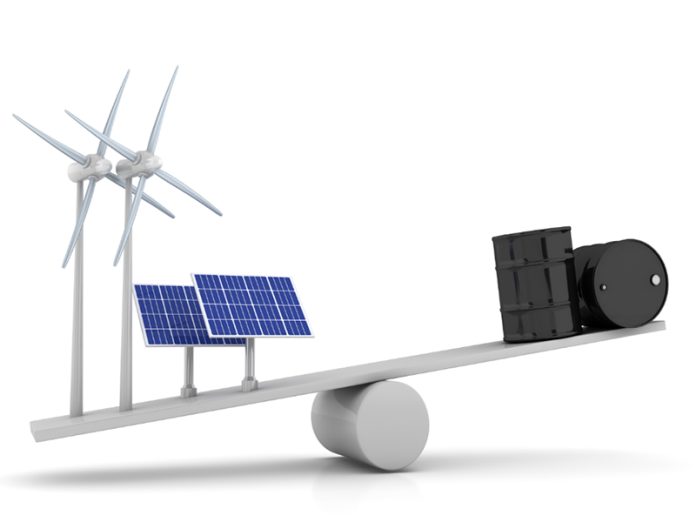Given the persistent reality of loadshedding and soaring electricity prices, many home and business owners are increasingly weighing the switch to solar energy systems versus generators, but are left questioning – how do the costs compare, and which offers the better long-term solution? And is reducing your grid-dependence even worth the investment?
“These are the most common questions asked by homeowners and businesses, especially as the ongoing national energy crisis, high electricity bills, and the inconvenience and loss of income associated with loadshedding drives South Africans to consider other options,” says Rein Snoeck Henkemans, Managing Director of Alumo Energy.
The solar energy experts at Alumo Energy therefore set out to answer these questions by performing a case study for a small business with a monthly electricity bill of between R15,000 and R20,000. This case study compares the costs of four scenarios: doing nothing and remaining completely dependent on the grid; purchasing a generator; installing a battery and inverter back-up system; or installing a hybrid solar solution with a battery and inverter back-up system.
Crunching the numbers, Alumo then considers a range of factors including the impact of the initial investment costs, system maintenance, tax incentives, and savings on electricity bills. Finally, Alumo assumes that this business is impacted by stage four loadshedding for a period of 15 years to determine which system is the eventual cost winner.
Scenario A: The cost of doing nothing
The cost of doing nothing and remaining completely tied to the grid certainly seems attractive, because it does not require any upfront investment costs compared to alternative energy solutions, notes Snoeck Henkemans.
However, if electricity prices continue to escalate at 15% per annum (based on the steep price hikes seen in recent years), the business would be spending just over R1 million on electricity per year by year 15.
Furthermore, if the business loses R50 in profit for every kilowatt hour that is lost to power outages, rising with inflation of 6%, the impact of loadshedding would mean a crippling accumulated loss in income of over R21.6 million.
Together, the impact of electricity prices and loss of income on their cash flow would mean that choosing to do nothing would actually cost them over R28.8 million in losses during the period.
Scenario B: Buying a generator
Next, Alumo considers what would happen if the business had chosen to purchase a 60kVA generator worth R300,000 to prevent a loss of income during power outages. The business then remains partly reliant on the grid, paying electricity bills that rise by the same 15% per annum as the first scenario.
But, while the business would be protecting its profits from blackouts, it would subsequently be spending more on diesel. Assuming that diesel inflation amounts to 12%, this would mean additional expenses of nearly R1.69 million per year by Year 15. Additionally, the business would need to pay maintenance costs every year which would likewise increase with inflation.
Together, these would mean a total of more than R16.9 million in losses over the period.
Scenario C: Buying a battery and inverter back-up system
In the third scenario, the business opts for a battery back-up system with a 75kWh battery complemented by a 50kW inverter for an upfront cost of R676,950 (calculated according to the business’ energy requirements).
This system successfully bridges the power gap during loadshedding even though the business still needs to pay even higher electricity bills over the years to recharge the battery.
Despite spending slightly more than double the upfront investment cost when compared to the diesel generator, the business would only spend a total of over R10.9 million over 15 years on electricity and their battery system – effectively saving nearly R6 million.
Scenario D: Buying a hybrid solar system with an inverter and battery back-up system
Alumo does not recommend completely severing ties with the grid, as the grid can act as an important back-up during periods of rainy or cloudy weather for example. Also, going completely off-grid can exponentially increase the cost of your system.
So, should this business owner opt to go mostly off-grid with a hybrid solar energy solution featuring a 32kWp solar system complemented by a 50kW inverter and 80kWh battery in keeping with its energy requirements, it would need to invest in the region of R1.18 million.
In terms of expenses, the business would still need to pay a small electricity bill each month, as well as maintenance costs. But through taking advantage of the Section 12B tax incentive, tax rebates, and the savings generated by maximising solar power self-consumption, the business would break even in terms of its initial investment after eight years, and by the fifteenth year would even be turning a tidy profit of over R1.9 million.
The time value of money (Net Present Value – NPV) has been taken into consideration for all scenarios and is displayed in the table below.
Table A: Case study assumptions
| Assumptions | |
| R/kWh | 2.8 |
| Load Shedding Stage | 4 |
| Electricity Escalation | 15% |
| Generator R/kWh | 8 |
| Diesel inflation | 12.00% |
| Profit Loss R/kWh | 50 |
| Inflation | 6% |
| Hurdle Rate | 11.25% |
| Battery Only Cost R/kWh | 9026 |
| Battery Size kWh | 75 |
Source: Alumo Energy (2023)
Table B: The power winner by costs
| Option | Initial Investment (Rands) | Net Present Value (Rands) | Business Interruption Cost (Rands) | Payback Period (Years) | Winner |
| Do Nothing | R0 | -R 7 528 623.96
| R 21 668 531.40 | Never | 4 |
| Get Generator 60kVA | R300 000 | -R 3 950 538.71
| R0 | Never | 3 |
| Get Battery Backup 50kW Inverter 75kWh Battery | R676 950 | -R 2 650 861.07
| R0 | Never | 2 |
| Get Hybrid (Solar + Battery) 32kWp Solar 50kW Inverter 80kWh Battery | R1 180 000 | R 132 002.44
| R0 | 8.34 | 1 |
Source: Alumo Energy (2023)

“In other words, while the upfront costs of solar can seem quite high or expensive by comparison, these systems clearly offer the best long-term value when compared to the cost of generators, battery back-ups, or, worst of all doing nothing. This is especially true for businesses that require consistent energy supply to maintain their operations, protect their bottom line, and even potentially boost their cashflow in the future,” concludes Snoeck Henkemans.







